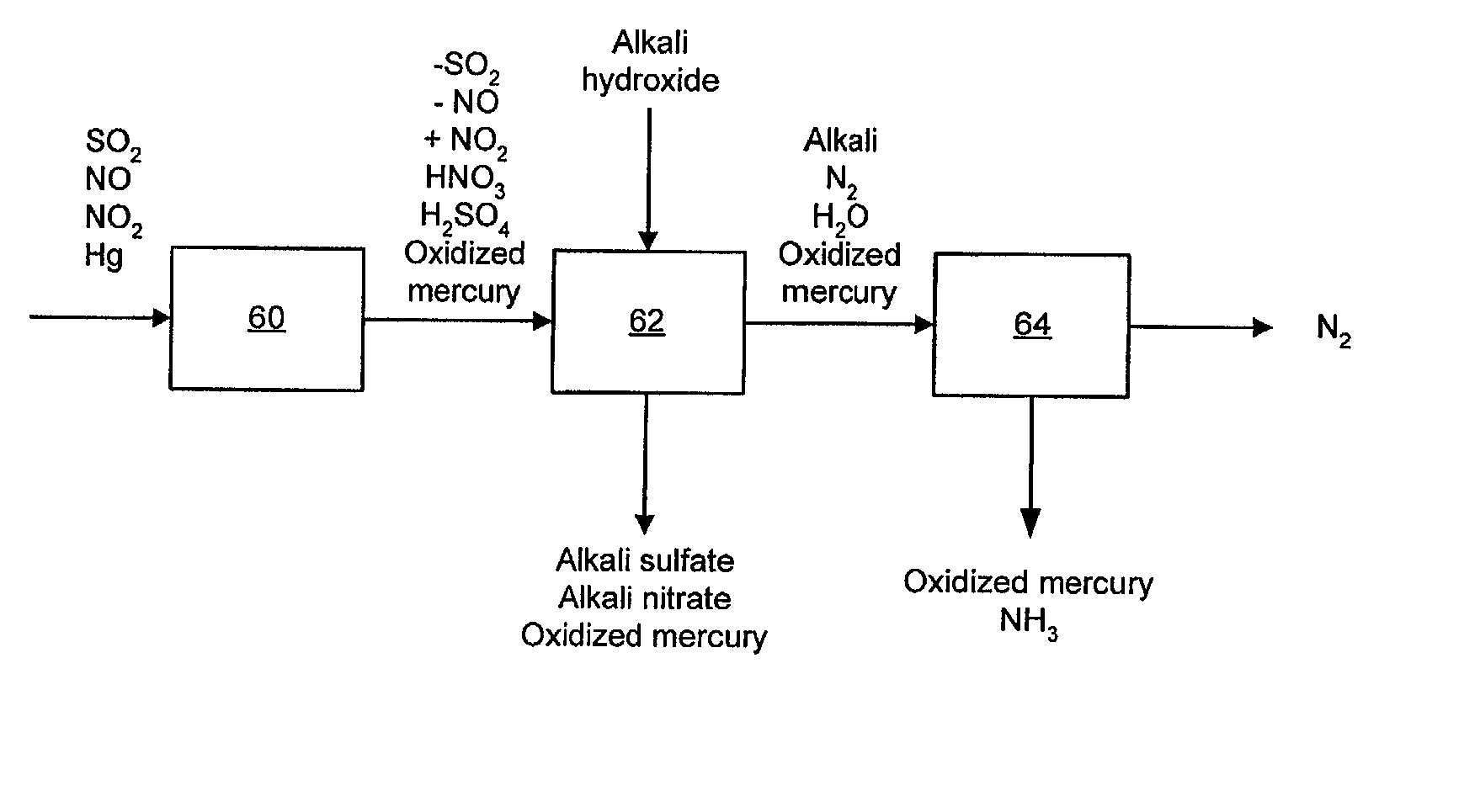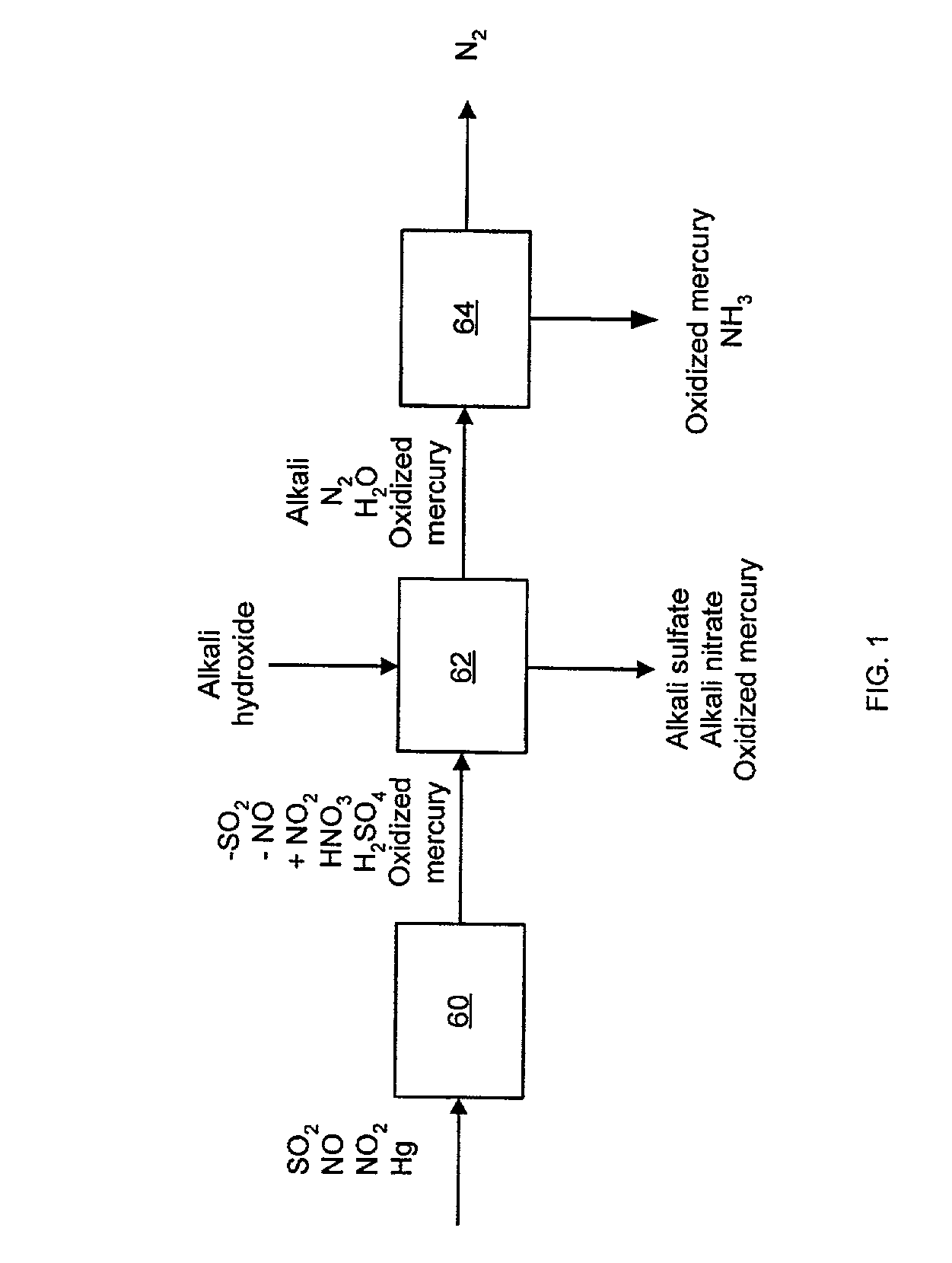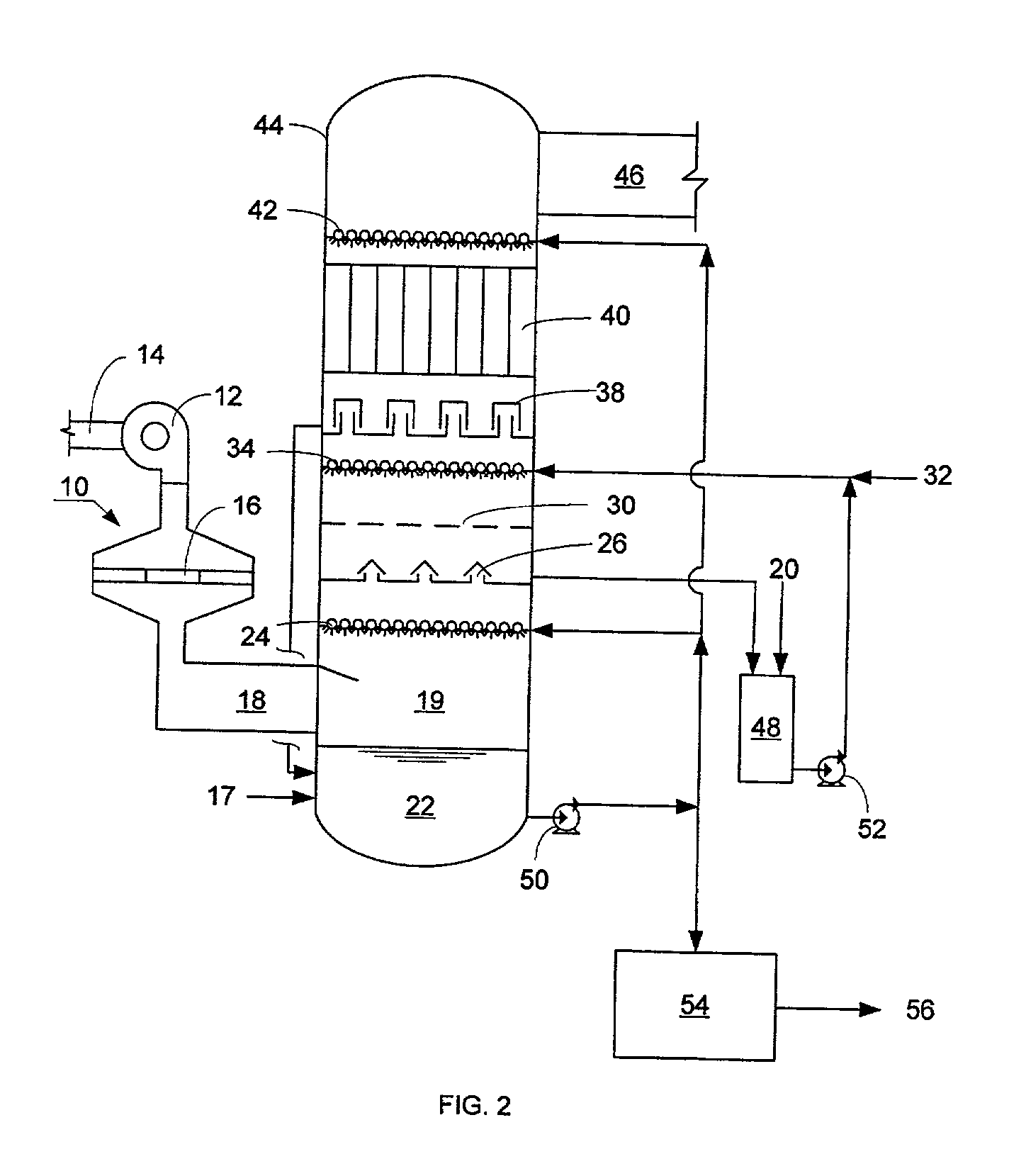NOx, Hg, and SO2 removal using alkali hydroxide
a technology of alkali hydroxide and nox, which is applied in the direction of machine/engine, silicon compound, separation process, etc., can solve the problems of serious safety concerns, byproducts known to have serious negative health effects on people, animals and plants, and the inability to remove so.sub.2
- Summary
- Abstract
- Description
- Claims
- Application Information
AI Technical Summary
Benefits of technology
Problems solved by technology
Method used
Image
Examples
example 2
[0046] An absorption test was done to determine steady state operating conditions for a system with inlet flue gas conditions of 7 ppmv NO, 248 ppmv NO.sub.2, 1485 ppmv SO.sub.2, 6% v / v O.sub.2 and balance N.sub.2. NaOH and NaS.sub.2O.sub.3 were added to the solution to maintain a pH of 8.0 and thiosulfate concentration of 1%. The concentrations of sulfite and sulfate in the system were allowed to build to steady state. The NO.sub.x removal rate was 77% at concentrations of SO.sub.3.sup.2-, SO.sub.4.sup.2-, and S.sub.2O.sub.3.sup.2- of 1.25% w / w, 9.5% w / w, and 1.0% w / w respectively.
example 3
[0047] Tests were conducted in a laboratory test facility for the NO oxidizing, scrubbing, and aerosol removal steps of the process of the present invention. The equipment consisted of a simulated flue gas delivery system, a coaxial cylinder DBD reactor, a packed column scrubber and a tubular WESP. The following is an example of data obtained in the lab test facility.
[0048] Simulated flue gas was delivered to the DBD reactor at a flow rate of 0.4 m.sup.3 / minute (14 scfm), a temperature of 143.degree. C. (290.degree. F.) and with the following composition: 6.2% v / v O.sub.2, 14.2% v / v CO.sub.2, 8.2% v / v H.sub.2O, 20 ppmv CO, 250 ppmv C.sub.2H.sub.4, 1740 ppmv SO.sub.2, and 259 ppmv NO.sub.x. Gas velocity through the discharge reactor was 15.2 m / s (50 ft / s) with a discharge power level of 140 watts. Gas from the discharge reactor entered a 10.2 cm (4 inch) ID packed column scrubber, packed with 1.3 cm (0.5 inch) INTALOX saddles to a depth of 1.2 m (4 ft.). Liquid was introduced at the ...
PUM
| Property | Measurement | Unit |
|---|---|---|
| mole ratio | aaaaa | aaaaa |
| temperature | aaaaa | aaaaa |
| diameter | aaaaa | aaaaa |
Abstract
Description
Claims
Application Information
 Login to View More
Login to View More - R&D
- Intellectual Property
- Life Sciences
- Materials
- Tech Scout
- Unparalleled Data Quality
- Higher Quality Content
- 60% Fewer Hallucinations
Browse by: Latest US Patents, China's latest patents, Technical Efficacy Thesaurus, Application Domain, Technology Topic, Popular Technical Reports.
© 2025 PatSnap. All rights reserved.Legal|Privacy policy|Modern Slavery Act Transparency Statement|Sitemap|About US| Contact US: help@patsnap.com



